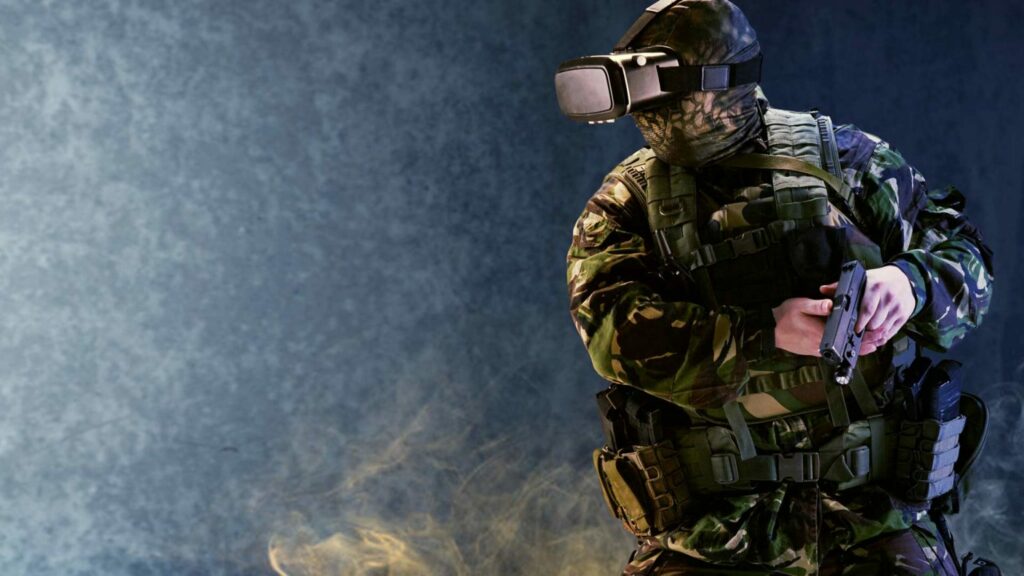Here at 360 immersive, we have been working with various industries for almost 6 years in the implementation of virtual reality or VR training to supplement traditional training. One of our first projects was working with the Idaho State Police to enhance their training methods pertaining to very specific practices, procedures, and tactics. We captured multiple daylong sessions of officers practicing specific scenarios such as hostage rescue with 360° video systems. What we found is that virtual reality makes a great use case for being able to experience and analyze scenarios prior to actually going into the live simulations. We have to stress that we do not feel that VR training is a replacement for live instructor training or scenario-based instruction. What we do feel is that VR training is a tremendous value in prepping for the instructor training courses, it can also be used as a post-course refresher because of the low cost and easy implementation of the content. In the case of the State police, we also found that there was tremendous value in being able to assess specific officer’s reactions within a live scenario to be able to offer constructive comments and critiques.
This type of scenario-based virtual reality training can go hand in hand with other types of VR training that can improve response time and shooting skills for officers that are looking for enhanced firearms training. There are a number of VR apps based on the HTC Vive or oculus platforms that will allow an officer to train in a meaningful way with virtual reality and as a supplement to their traditional live-fire training.
Some of these apps are based on the USPSA competitive shooting matches and some of these firearms training apps are more specific such as dealing with concealment and self-defense. Regardless of the currently available apps or apps that will be available in the future, they are hardware-dependent and of course, should be only used as a supplement to traditional firearms training.
Other virtual reality firearms training platforms are specifically designed for the law enforcement officer, when it comes to mind is called apex officer virtual reality training and it utilizes current virtual reality hardware to not only train for shooting skills but also other conditions that may affect an officer that is involved in a shooting. Police training examples would be a de-escalation, use of force, crisis intervention, communication, and mental health concerns.
One aspect of virtual reality for firearms training is the advent of affordable solutions whether you’re looking to be more proficient with a handgun, rifle, or shotgun. Prior to the use of cost-effective VR simulations a major player in the virtual simulation arena was VirTra which is created virtual training simulations for law enforcement for a number of years. The difficulty with the VirTra platform is that it is expensive to implement requiring a large commitment in budget and space and that the simulation software is proprietary so that there is not a high degree of flexibility in simulation content except for those simulations provided by the company. The VirTra system does do a good job in immersing the trainee in a 300° virtual environment, the weapons are modified handguns that give a feel of the action moving for each shot and the accuracy and consistency seem to be top-notch. In some of the firearms training simulations, there are explosions, surprises, and sometimes injuries that have to be dealt with and as with all VR training, it is a safe environment to make mistakes and especially learned from those mistakes
So why would virtual reality be useful in firearms training? Like anything else it comes down to muscle memory, whether you’re a competitor for a law enforcement officer you need to assess the situation, understand any threat levels, and react by manipulating your firearm and ultimately hitting the target or in the case of law enforcement neutralizing the threat. Virtual reality can actually put you in the scene or scenario and allow you to practice processes, procedures, and tactics in a safe environment and you can do it over and over again and tell you have created a high degree of proficiency. The value of VR has been proven in many fields from a training standpoint but firearms training really epitomizes the value because it can be a life-and-death situation or in the case of a competitive sport it can be the difference between scoring well… Or not.
Traditional firearms training especially dealing with live-fire exercises is expensive, it takes a safe and secure facility, trained range officers, and that is why traditionally for most law enforcement officers may spend only two sessions a year training with their firearms. Virtual reality can change all of that by offering an inexpensive solution that they can work with real-life virtual simulations and practice those situations involving firearms over and over again for the safety of themselves and the community that they protect.
Virtual reality offers the ability to engage in multiple scenarios that may require the use of firearms training within a single training session. Proficiency is enhanced, muscle memory is engaged and overall the training simulation is more interesting to the law enforcement officer or competitive shooter than just punching holes in paper.
Here’s the interesting thing when you’re looking at using virtual reality for firearms training, it’s actually pretty simple, it’s cost-effective and it does the job.
The biggest challenge with traditional firearms training is the fact that it’s more about proficiency in handling the weapon and what I would call traditional marksmanship. Frankly, it’s all about how to safely handle a weapon and punch holes in paper accurately. What it does not necessarily train for is the real-life stress in a live-fire scenario that requires a completely different set of skills and proficiencies than traditional training offers.
Virtual reality can actually place a law enforcement offer in this specific scenario where they must make life-and-death decisions in what amounts to just a few heartbeats. This type of training is much closer to what may face a law enforcement officer in a real-life confrontation than traditional firearms proficiency training or refresher qualification.
A recent study that was recorded over a 15 year period with the Dallas Police Department basically promoted the fact that in over half of the encounters where an officer had to draw his weapon and fire, they missed completely. In 130 of the cases that researchers pinpointed, the calculated hit rate was only 35%.
Clearly, there is a need for a better tool when it comes to police officer firearms training that deals with more real-life scenarios versus marksmanship in a controlled environment such as a shooting range.
Virtual training has been available to the law enforcement community for some time, but the biggest challenge to adoption has been the cost associated with the hardware and software. Only the largest departments could afford the budget necessary not only for the initial purchase but the ongoing expense of maintaining the equipment and updating new scenarios so that the training would stay relevant and meaningful.
In the last few years, this paradigm has changed because of the advent of inexpensive hardware and software solutions that still offer a meaningful level of engagement in interactivity to the law enforcement officer taking the training. These inexpensive systems are not only flexible in their approach but offer an ongoing library of training content that can engage officers with new and more challenging scenarios to be able to sharpen their decision-making and all the while practicing the tactics that may save their lives.
Another offshoot of firearms training is using virtual reality to train scenarios involving people with mental health challenges. People suffering from mental health can sometimes exhibit aggressive tendencies that may ultimately and up in a police shooting an understanding that those people are not aggressive necessarily towards the officer but are more so dealing with a reality that the officer may not understand.
People suffering from schizophrenia can exhibit very aggressive tendencies because they are hearing and seeing elements within their reality that can cause that aggressive behavior and that the police officer may not understand and may take that aggressive behavior as a direct confrontation and will respond accordingly.
The use of virtual reality or VR training to help law enforcement officers understand the characteristics that a person suffering from schizophrenia exhibits will go a long way to understanding and creating empathy for that particular person suffering from that disorder. In some cases, a heightened degree of understanding may de-escalate the situation to the point that a shooting may not occur versus what may have been a tragic situation.
Fundamentally, virtual reality allows a trainee to walk in someone else’s shoes, to understand reality beyond their own and this is especially important when it comes to dealing with the community and some members of the community that are challenged with mental health disorders.
The use of virtual reality for firearms training in the law enforcement community will undoubtedly be looking back on as a game-changing technology that will enhance the safety of our officers and also the community at large.


